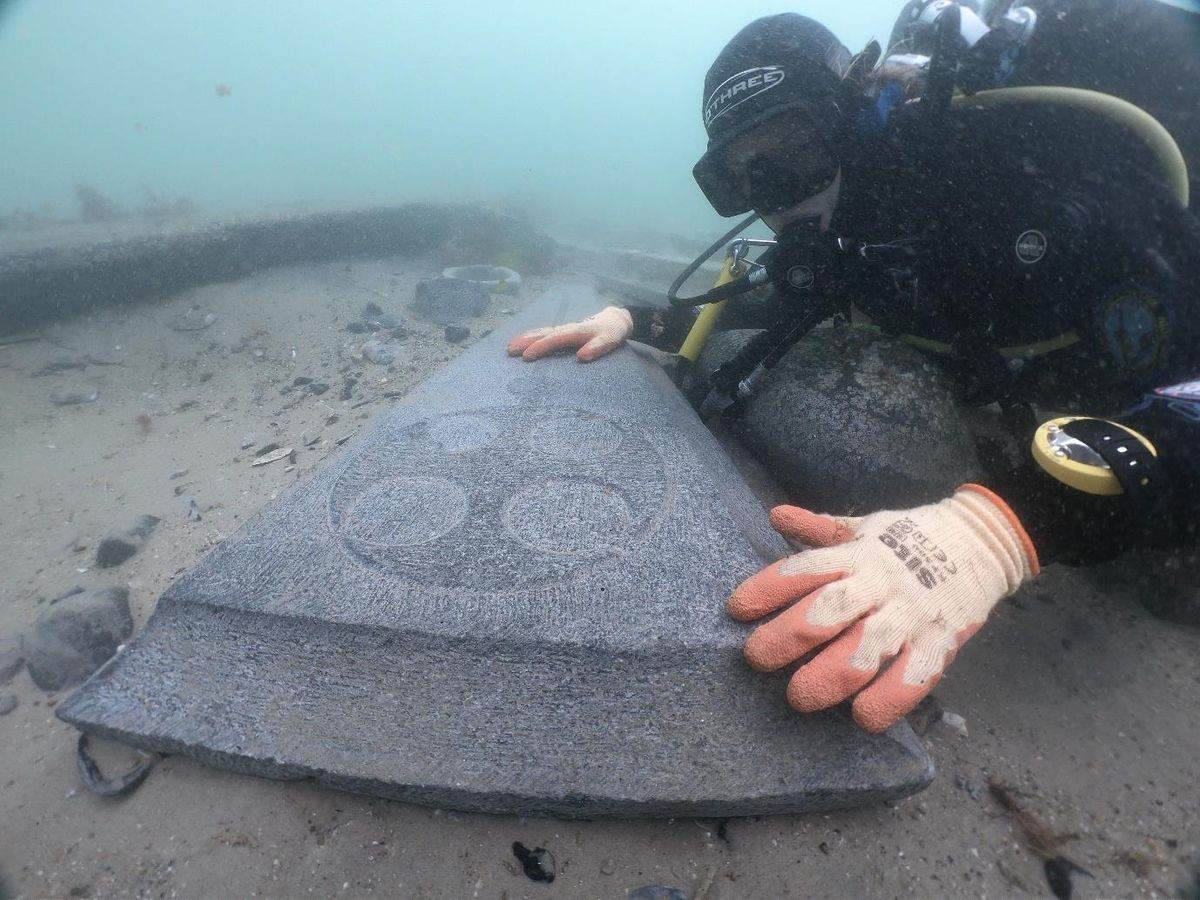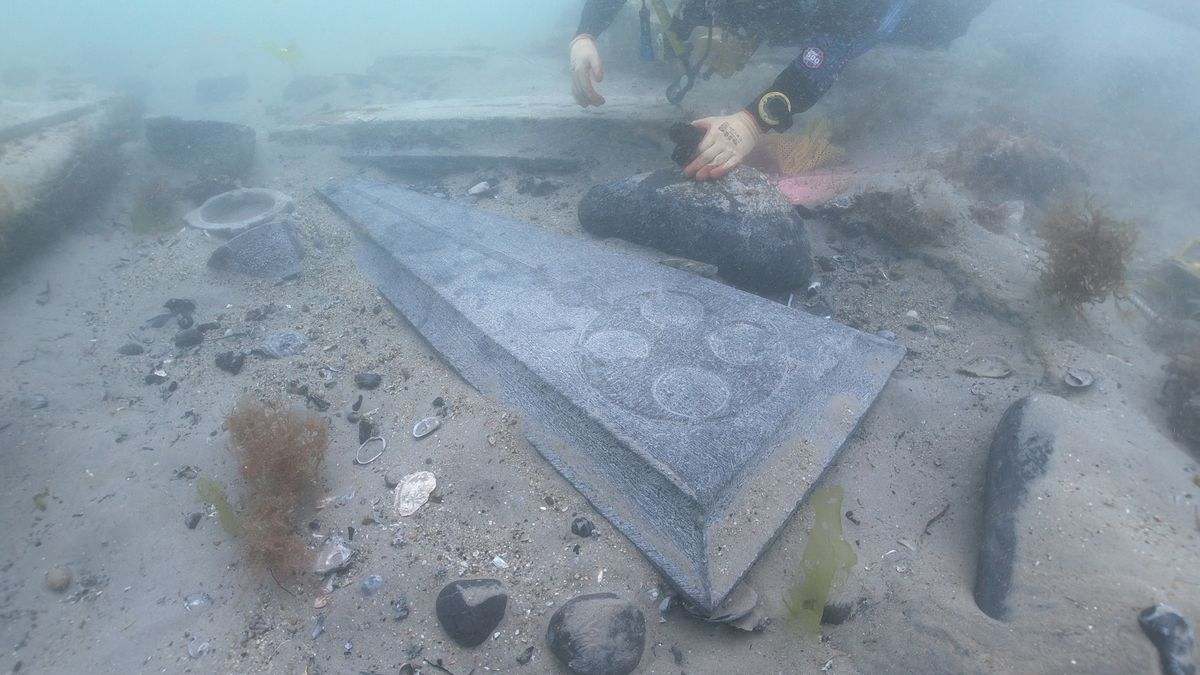
By John Greeve
The remains of an exceptionally rare 13th-century medieval ship believed to be Britain’s oldest known protected wreck in English waters, has been discovered in the Swash Channel on the approaches to Poole harbour.
Trevor Small of Rocket Charters, became curious when his diving boat’s scanner detected an unusual reading over a spot on the Dorset seabed. Several months went by before the 54-year-old dive charter operator decided to investigate what lay below. He directed a colleague of his to take a look. Within minutes the diver returned to the surface brandishing a medieval copper cauldron and Trevor knew they had found ‘something special’.
Ironically, Trevor had skippered thousands of sea miles in the last thirty years looking for shipwrecks from his home port of Poole and here was one literally on his doorstep. As he explained: ‘Recent storms had revealed something unknown on the seabed. I was granted permission to dive the wreck. The rest is history! I had found one of the oldest shipwrecks in England.’



The discovery proved to be even more significant than first thought. The survival of 13th-century vessels is extremely rare, and prior to this discovery, there are no known wrecks of seagoing ships from the 11th to the 14th century in English waters. There are older wrecks dating back to the Bronze Age in English waters but these only comprise the remains of the cargo and no hull structure remains.
Historic England worked in partnership with Trevor and Bournemouth University marine archaeologists. Dendrochronological analysis of the hull planking showed the Irish oak tree timber had a fell date of 1242-1265 which coincides with the reign of King Henry III.
Maritime Archaeologist, Tom Cousins who is part of the team at Bournemouth University assigned to uncover and preserve the wreck said: ‘Very few 750-year-old ships remain for us to be able to see today and so we are extremely lucky to have discovered an example as rare as this and in such good condition. A combination of low oxygenated water, sand and stones has helped preserve one side of the ship and the hull is clearly visible.’
Finds recovered from the wreck, now daubed the ‘Mortar Wreck’ include two immaculately preserved Dorset Purbeck stone gravestones with two different Gothic designs. One of the slabs is decorated with a wheel-headed cross, believed to be a style common in the early 13th century, while the second is decorated with a splayed arm cross, more common in the mid 13th century. The slabs remain unpolished, suggesting that the polishing would have occurred when they reached their intended destination.
They are significant because they were pre-carved and suggest a demand for highly skilled stonemasons and their products.
Other finds include a large cauldron for cooking soup, a smaller cauldron with a long handle and mugs covered in concretion. Several Purbeck stone mortars used by millers to grind grains into flour have also been recovered. Working with Historic England, and maritime archaeological divers, the partnership will continue to investigate, record and develop a greater understanding of this protected site and this amazing wreck.


